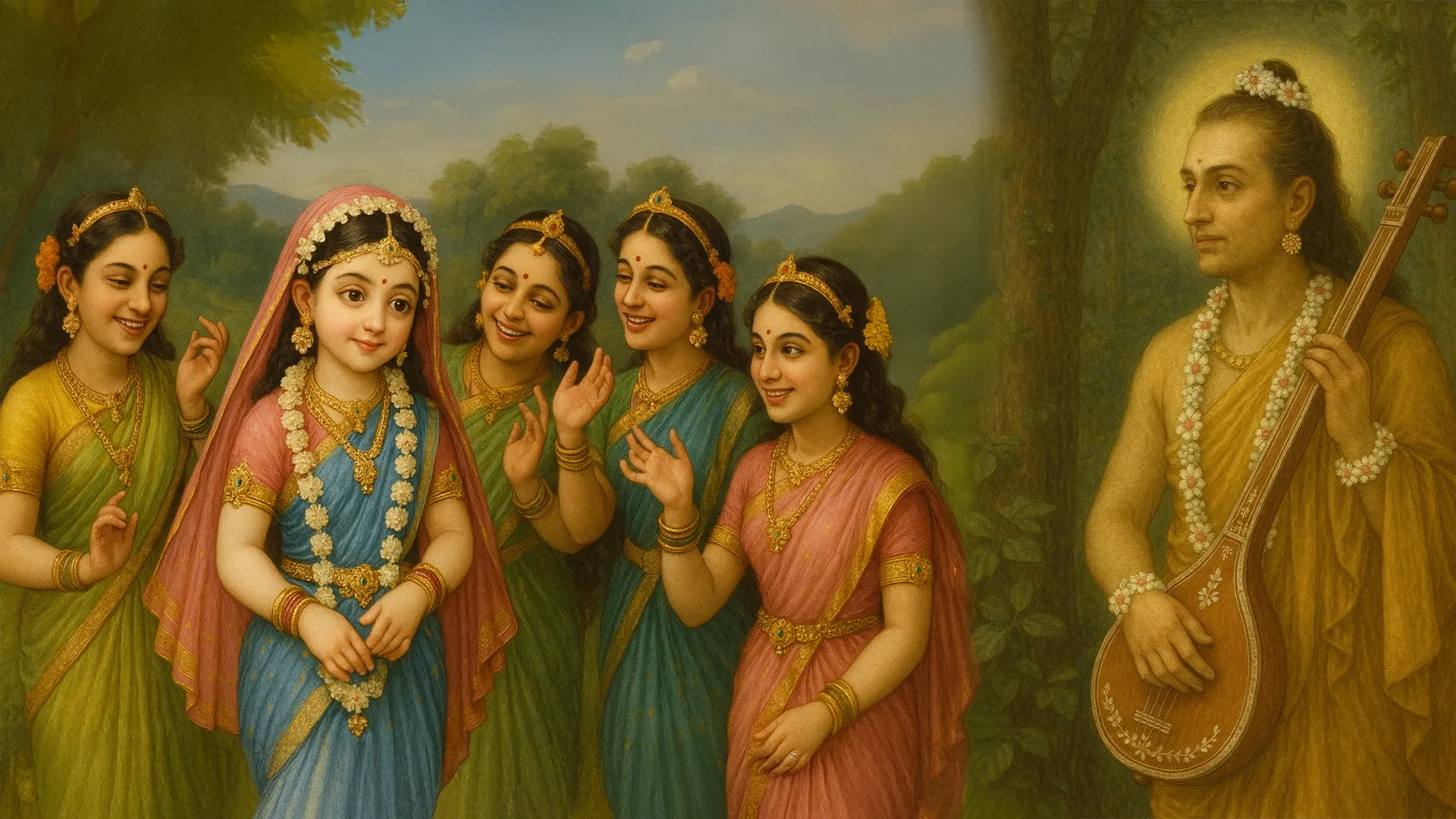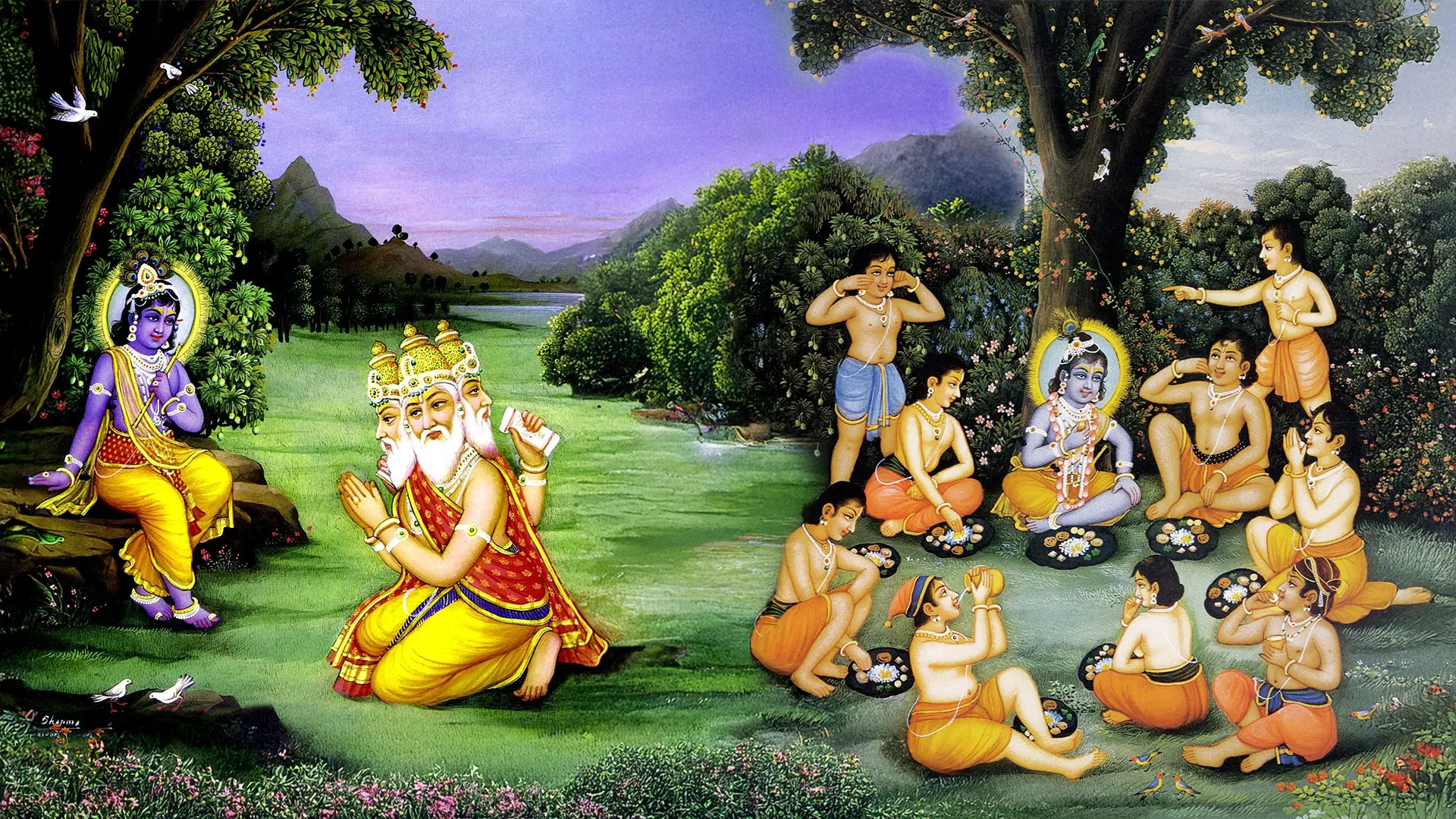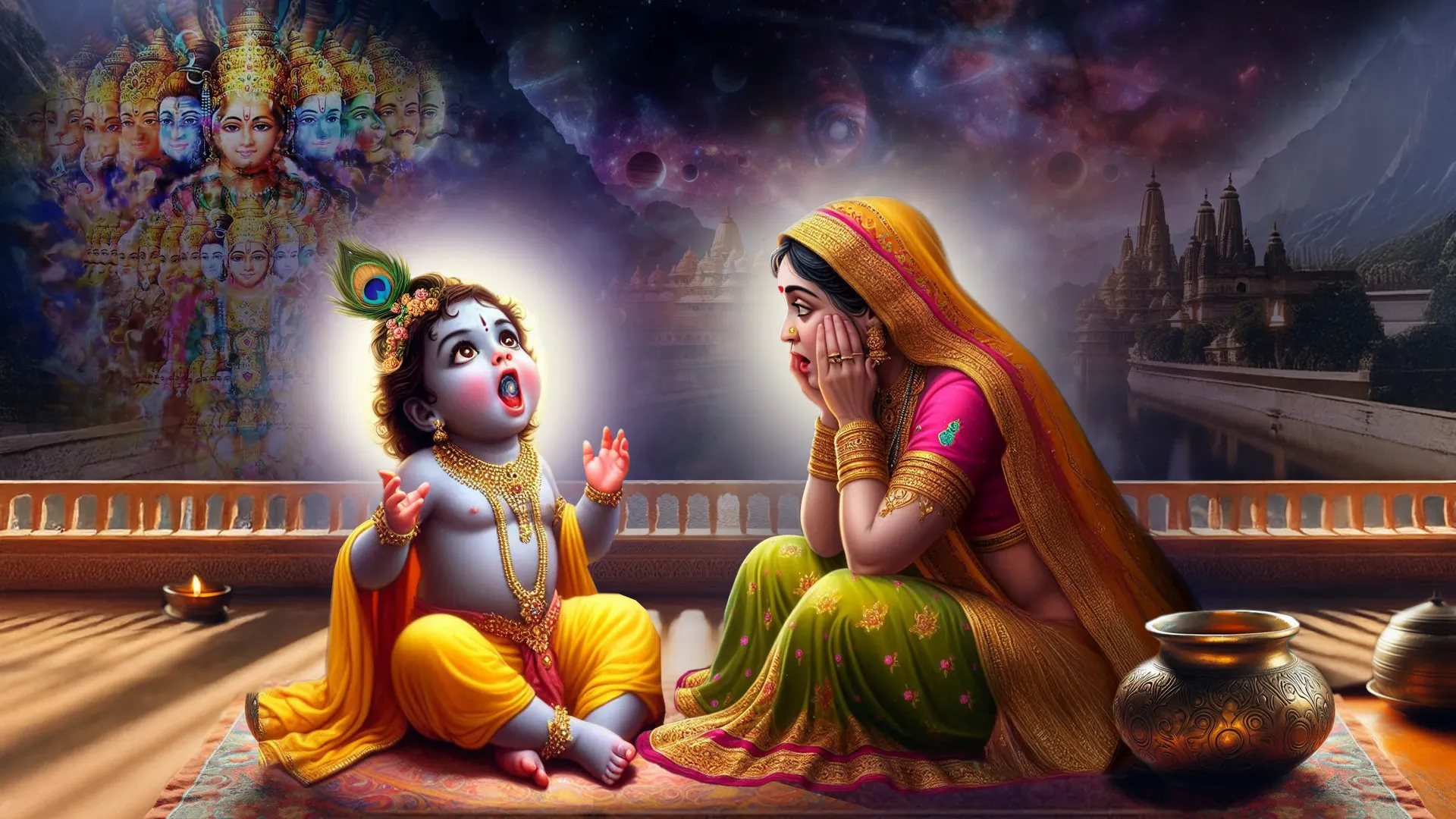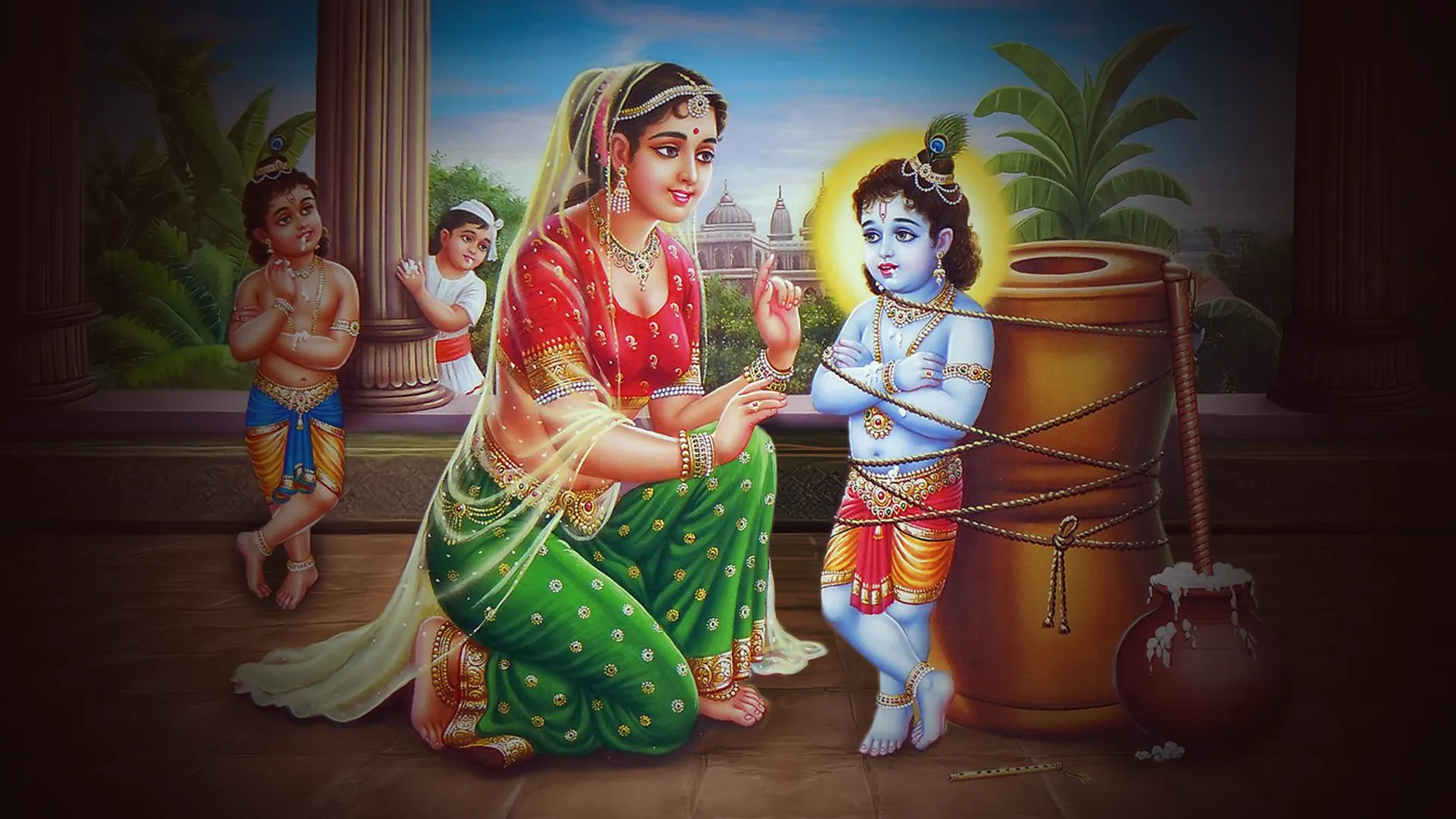There are various versions of Bhagwan Jagannath's origin in various scriptures. Here, we are referring to the Purushottam kshetra Mahatmya of the Skanda Puran and popular tales from Odisha’s Jagannath tradition.
Once, in Satya Yug, a great Suryavanshi king named Indradyumna ruled Avanti (present-day Ujjain). A devout devotee of Bhagwan Vishnu, he is considered a righteous king who rules his kingdom justly and faithfully. Once, during a worship ceremony in the sanctum sanctorum, King Indradyumna addresses his assembled priests, scholars, poets, and astrologers with great respect. He inquires earnestly, "Where can we witness Jagannath, the Master of the Universe, with our own mortal eyes?"
In response to the king's query, a knowledgeable pilgrim in the assembly brilliantly speaks, "O virtuous ones, seekers of sacred pilgrimage, I have travelled extensively and heard of many holy places. There exists a land in Bharat's subcontinent known as Odra Desha (Utkala, Orissa) on the shores of the Southern Ocean. There lies the sacred place called Shree Purushottam Kshetra."
"In this region," he continues, "stands Mount Nilagiri, enveloped by dense forests. At its heart, a Kalpa tree spreads over three kilometres, offering sanctuary from even the gravest sins. To its west lies the renowned Rauhina, a Kunda (pool) filled with primordial waters that grant liberation merely by its touch. On the eastern bank rests an idol of Shree Krishna, crafted from sapphires, earning the name "Neel Madhav," meaning the blue form of Shree Krishna.
"Towards the west," he elaborates, "surrounded by the homes of Savara (hunter tribe), there's a path leading to the temple of Neel Madhav. Here, Bhagawan Jagannath stands, holding the conch, discus, and a mace, embodying compassion and granting liberation from the miseries of the material world."
The pilgrim recounts his year-long stay at Shree Purushottam Kshetra, immersed in rituals and residing in the forest for God's appeasement. He describes heavenly fragrances and celestial visitors showering flowers from the Kalpa tree, a sight unparalleled in any other Vishnu temple.
He concludes with an ancient legend of a crow, though of a lower species and devoid of merit or knowledge, who attains liberation merely by seeing Neel Madhav.
Moved deeply by these narratives, King Indradyumna expresses his gratitude, acknowledging his spiritual growth thanks to Shree Krishna's grace. Seeing the king's devotion, the pilgrim disappears suddenly, leaving the king amazed and eager to fulfil his newfound spiritual quest.
Quest for Neel Madhav
King Indradyumna entrusts his faithful Brahmin priest, Vidyapati, with the mission to locate Neel Madhav. Vidyapati embarks on an arduous journey that leads him across distant lands and through dense forests inhabited by the Savara tribe. In these remote and secluded realms, Vidyapati encounters Viswavasu, the chief of the Savara. Despite initial suspicions, Viswavasu welcomes Vidyapati into his home, offering him shelter and hospitality.
During his stay, Vidyapati forms a close bond with Viswavasu's daughter, Lalita, and they eventually marry. Vidyapati observes that Viswavasu often disappears into the forest for long periods. Curious about his father-in-law's secret, Vidyapati inquires about these mysterious journeys. Lalita reveals that Viswavasu worships Neel Madhav, hidden deep within the forest.
Vidyapati expresses his deep desire to see Neel Madhav. Although bound by a vow of secrecy, Viswavasu eventually agrees, persuaded by his daughter Lalita. However, Viswavasu blindfolds Vidyapati for the journey to keep the exact location hidden. Cleverly, Vidyapati scatters mustard seeds along the path, intending to trace the route later when the seeds sprout.
Upon reaching the hidden cave, Vidyapati is overwhelmed by the sight of Neel Madhav. He discreetly takes some offerings from the deity as evidence of his discovery. When he returns to the kingdom, the mustard seeds he had scattered have sprouted, marking the path to the deity's location.
Divine Intervention and the Construction of the Jagannath Temple
News of Vidyapati's discovery reaches King Indradyumna, who sets forth with his entourage to bring Neel Madhav to Avanti. Following the path marked by the mustard plants, they arrive at the cave only to find the deity has vanished, leaving the king grief-stricken and despondent. In his sorrow, King Indradyumna resolves to fast unto death.
During this poignant moment of despair, Bhagawan Vishnu appears again, this time in a dream, revealing a divine plan. Bhagwan Vishnu instructs King Indradyumna to build a grand temple in Puri and to establish idols of Bhagwan Jagannath along with Balabhadra and Subhadra. The idols are not ordinary; they will be carved from a sacred wood log (Daru), which the king can find floating in the sea. Thus, Bhagwan Jagannath is also referred to as "Daru Brahman", meaning the manifestation of the Brahman in the form of a wooden log.
Following Bhagwan Vishnu's divine guidance, King Indradyumna embarks on a quest to locate the sacred log. Eventually, he discovers the divine Daru floating on the sea and returns to Puri with it. Vishwakarma, the architect of the Devatas, appears as an old carpenter in front of the king as Anant Maharana and agrees to carve the idols but under a strict condition of absolute secrecy.
Driven by curiosity, King Indradyumna and his queen prematurely open the door to the room where Vishwakarma works. This act causes Vishwakarma to leave the idols unfinished, imbuing them with their unique and revered forms. These incomplete yet divine images of Jagannath, Balabhadra, and Subhadra are then enshrined in the newly constructed temple in Puri, marking the beginning of Their worship.
The tale of Neel Madhav and the construction of the Jagannath Temple in Puri remains etched in Odisha's cultural and spiritual heritage. They testify to the deep spiritual connections forged between diverse communities and traditions through the inclusive worship of Bhagwan Jagannath. The journey undertaken by King Indradyumna, Vidyapati, and the Savara underscores the enduring faith and devotion that continues to resonate in the hearts of millions devoted to Shree Jagannath.
Jagannath Swami: The Heart and Soul of Odisha's Culture and Identity
Odisha's culture, literature, poetry, dance like Odissi, and every aspect of Odia life are deeply intertwined with Jagannath Swami. Bhagwan Jagannath stands as the center and soul of Odia identity. The people of Odisha are so closely associated with Jagannath that they lovingly call Him by names like 'Jagga' (short for Jagannath), 'Kalia' (referring to His dark complexion), 'Chakka Ankhi' (one with eyes like wheels), etc. The legend says that during the famous Rath Yatra, Bhagwan Jagannath's chariots refuse to buzz until His devotees scold Him. It is said that Bhagwan Jagannath enjoys the playful and sweet scoldings of His devotees so much that He keeps stopping at various points during the Rath Yatra.
Throughout history, eminent scholars of Odisha, such as Saral Das and Jagannath Das, have made significant contributions to understanding and widely disseminating the divine leelas of Bhagwan Jagannath. Saral Das's Odia Mahabharat and Jagannath Das's Odia Bhagabata intricately portray Bhagwan Jagannath's divine origins. These texts honour Bhagwan Jagannath as a form of Shree Krishna and reflect on His widespread influence across various religious traditions, demonstrating the lasting impact of Jagannath in people's hearts and minds.








